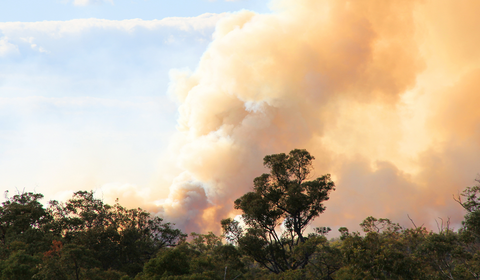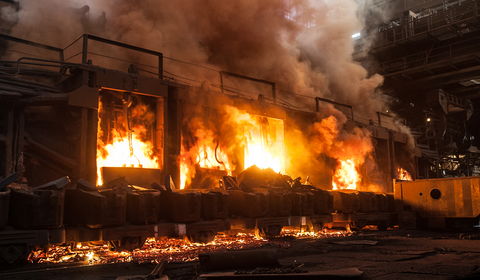Following an exceptionally warm spring, June marked the hottest on record in England—part of a growing trend linked to human-driven climate change. What was once rare is becoming the norm, with the likelihood of extreme summers expected to rise significantly by mid-century. These conditions pose serious risks to infrastructure, services, and the economy—making climate resilience a growing priority for the insurance industry.
The prolonged hot weather is proving extremely challenging for farmers, particularly given the increased potential for fires and the likelihood of increased poultry mortality resulting from heat stress.
Tinder-dry crops pose fire hazard
Due to the weather and dry conditions many farmers have started harvesting crops incredibly early in the season following one of the driest springs on record. However, the extreme conditions make the harvesting process particularly hazardous, as the tinder-dry standing crops can easily ignite.
To date in 2025, the UK has experienced one of its most active periods for wildfires on record, with the country having exceeded the previous annual burnt area record by the end of April, according to the Global Wildfire Information System.
In the current conditions, Crawford expects to see a rise in the number of field standing crop fires across the UK. Ignition of such fires may be deliberate or accidental. For example, machinery striking flint or mechanical faults can generate sufficient sparks to cause a fire, while carelessly discarded smoking materials can also be a possible source.
Given the prolonged dry period, such fires can spread rapidly, with the potential to jump field boundaries such as ditches, hedgerows and tracks, creating the potential to ignite farm buildings and neighbouring properties and endangering lives. There is also a real risk of people being trapped by flames and smoke or cut off from safe exits.
While safety is paramount in such conditions, the financial losses from these events can be considerable. According to NFU Mutual’s Rural Crime Report 2025, the cost of farm fires in 2024 was estimated at £96.1 million.
Damage to crops and machinery can lead to claims amounting to hundreds of thousands of pounds. Additional costs may include hiring replacement machinery such as combine harvesters or tractors to maintain operations.
Risk management during harvest
Farmers and agricultural contractors should prioritise risk management as they begin harvest operations. This includes:
- Regular maintenance of machinery, with checks on drive belts, bearings, fuel pipes and filters to reduce the risk of malfunction.
- Keeping machinery free of dust and chaff to minimise fire hazards.
- Proper fire protection is essential.
Farmers and contractors must ensure:
- Fire suppression systems are inspected and fully operational.
- Fire extinguishers are accessible, in working order and that all employees know their locations and how to use them.
- Fire extinguishers mounted on machinery are included in annual inspections and servicing, as these are often overlooked.
- Water bowsers and cultivation equipment should be readily available to help extinguish fires and create firebreaks to limit their spread. It is also important to know the locations of nearby water sources such as ponds, lakes, reservoirs and rivers.
Crawford Risk Consulting offers a truly valuable service to the agriculture sector, where managing risk is increasingly complex and critical. Their data-led approach—combining site surveys, risk scoring and industry trend analysis—helps farms and agribusinesses identify vulnerabilities and build resilience. From fire and flood risks to business continuity and environmental concerns, their end-to-end support ensures that agricultural operations can continue with confidence, even in the face of disruption.
Poultry and heat stress
Extreme heat can also pose a significant threat to the health and welfare of poultry. Heat stress occurs when hot temperatures, high relative humidity and low airspeed make it difficult for birds—particularly broilers approaching the end of the growing cycle —to regulate their body temperature. A DEFRA study entitled Heat Stress in Poultry noted that when such situations occur broilers will die if their body temperature increases by more than 4°C.
While artificial ventilation systems can usually maintain a safe temperature in poultry houses, during heatwaves these systems may not be able to keep temperatures within a safe range. If not addressed quickly, heat stress can lead to significant bird mortality. Surviving birds may also fail to reach their expected end weight, resulting in lost income or gross profit.
Insurance considerations
Finally, we recommend that brokers conduct regular reviews of their clients’ business interruption coverage to ensure they have adequate protection in place should a loss occur.



